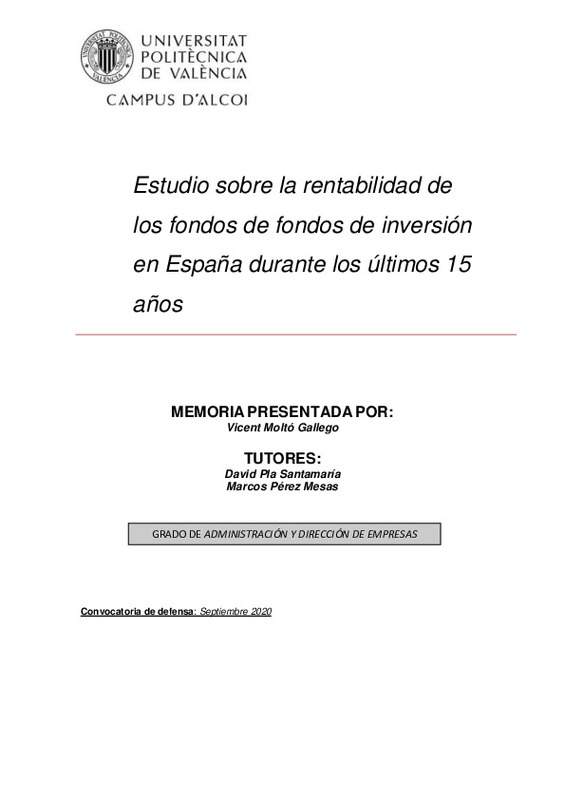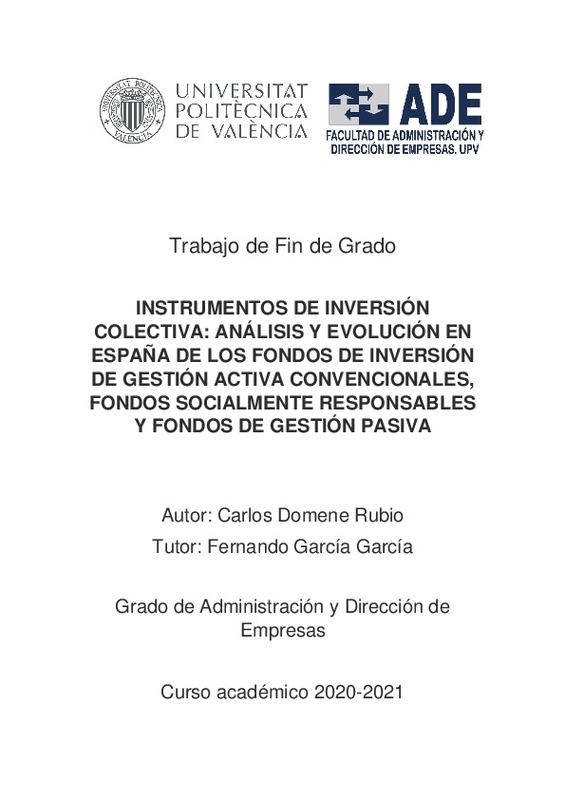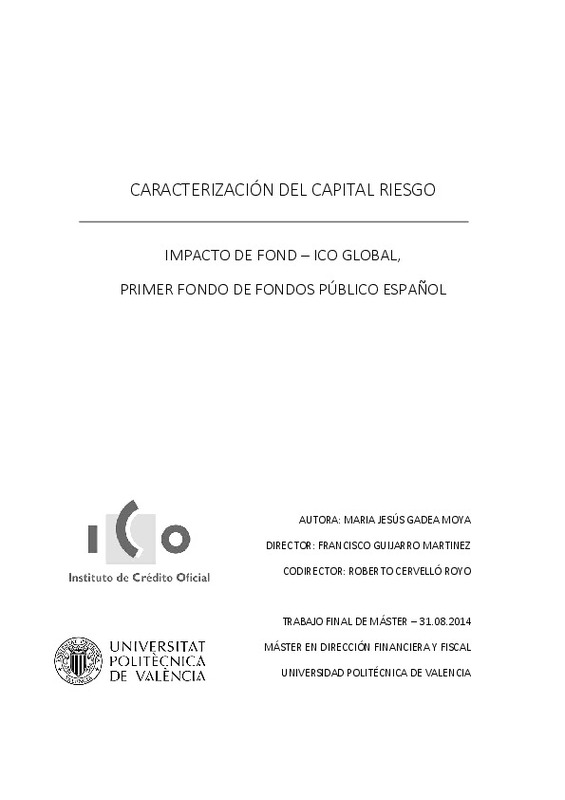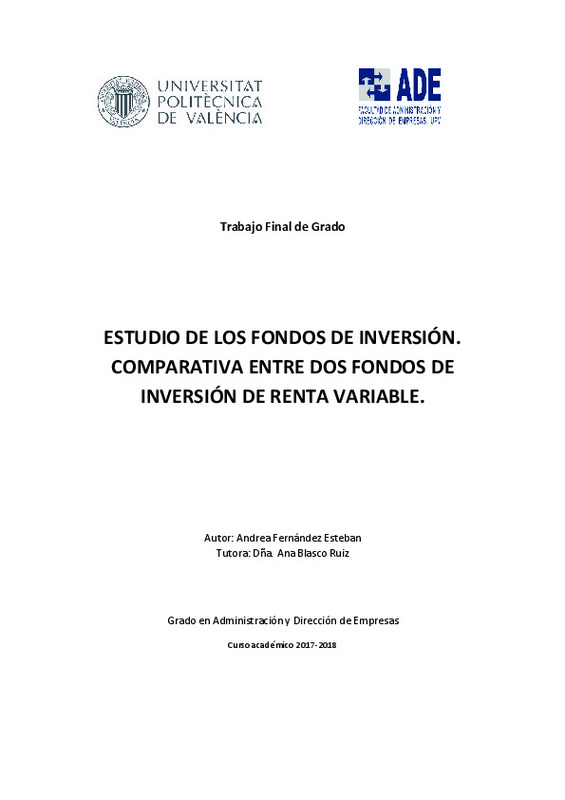|
Resumen:
|
[ES] En este proyecto se realiza un estudio de la rentabilidad de los fondos de fondos españoles durante los últimos 15 años. Se presentará una introducción donde se expondrá en qué consisten los fondos de inversión y su ...[+]
[ES] En este proyecto se realiza un estudio de la rentabilidad de los fondos de fondos españoles durante los últimos 15 años. Se presentará una introducción donde se expondrá en qué consisten los fondos de inversión y su historia, marcando especialmente la diferencia entre estos y los fondos de fondos, que son un tipo de fondo común. También se hará un breve resumen de la legislación española a la que se deben someter. Seguidamente, se empieza con el estudio de la rentabilidad, cuya principal razón de ser es la de verificar si los fondos de fondos son un producto financiero en el que realmente vale la pena invertir y, en especial, orientar a un posible inversor final, de forma que pueda tomar la decisión más acertada posible. Se han estudiado un total de 114 fondos, organizados en 29 categorías. Como principal fuente de información se ha utilizado Morningstar, y la metodología ha consistido en la obtención de la rentabilidad acumulada durante 15 años, así como la CAGR y la volatilidad de cada uno de los fondos estudiados. Estos valores se compararán con los del benchmark del grupo del que corresponden, además de entre sí y con la media de rentabilidad del grupo incluyendo fondos internacionales, de forma que se vea si los fondos españoles están por debajo o por encima de la media. Por último, se presenta una propuesta de publicación de artículo, donde se recogen las conclusiones a las que se ha llegado, entre las que destacamos que la mayoría de los fondos de fondos españoles, por no decir todos, tienen una rentabilidad acumulada a 15 años peor que los benchmark que se utilizan de referencia para cada uno de ellos, por lo que realmente no son, salvo casos puntuales, la mejor opción para invertir.
[-]
[EN] In this thesis a study about the rentability of Spanish funds of funds during the las 15 years is made. It will present an introduction about what funds of investment are and its history, specially differentiating ...[+]
[EN] In this thesis a study about the rentability of Spanish funds of funds during the las 15 years is made. It will present an introduction about what funds of investment are and its history, specially differentiating these from funds of funds, which are a type of normal funds. Also, there will be a summary of the Spanish legislation to which they are subject to. Next, the study itself begins, being its main reason of being to verify whether the funds of funds are a financial product in which it is worth to invest in or not and, specially, to guide an individual investor so he or she can make the best decision possible. 114 funds have been studied, classified in 29 different categories. Morningstar has been the main source of information, and the methodology used consists in obtaining the cumulative rentability during the las 15 years, as well as the CAGR and the volatility of each one of the studied funds. These values will be compared with the ones of the group¿s benchmark to which they belong, between themselves and with the international average, in order to see if Spanish funds are above or below the average. Lastly, a proposal of article is presented, in which all the conclusions are summarized, highlighting among them that most of Spanish funds of funds, if not all, have a cumulative rentability during 15 years worse than its benchmark of reference, so we could say that they are, except some individual cases, not the best investment option.
[-]
|




![MS Excel file [Excel]](/themes/UPV/images/msexcel.png )






